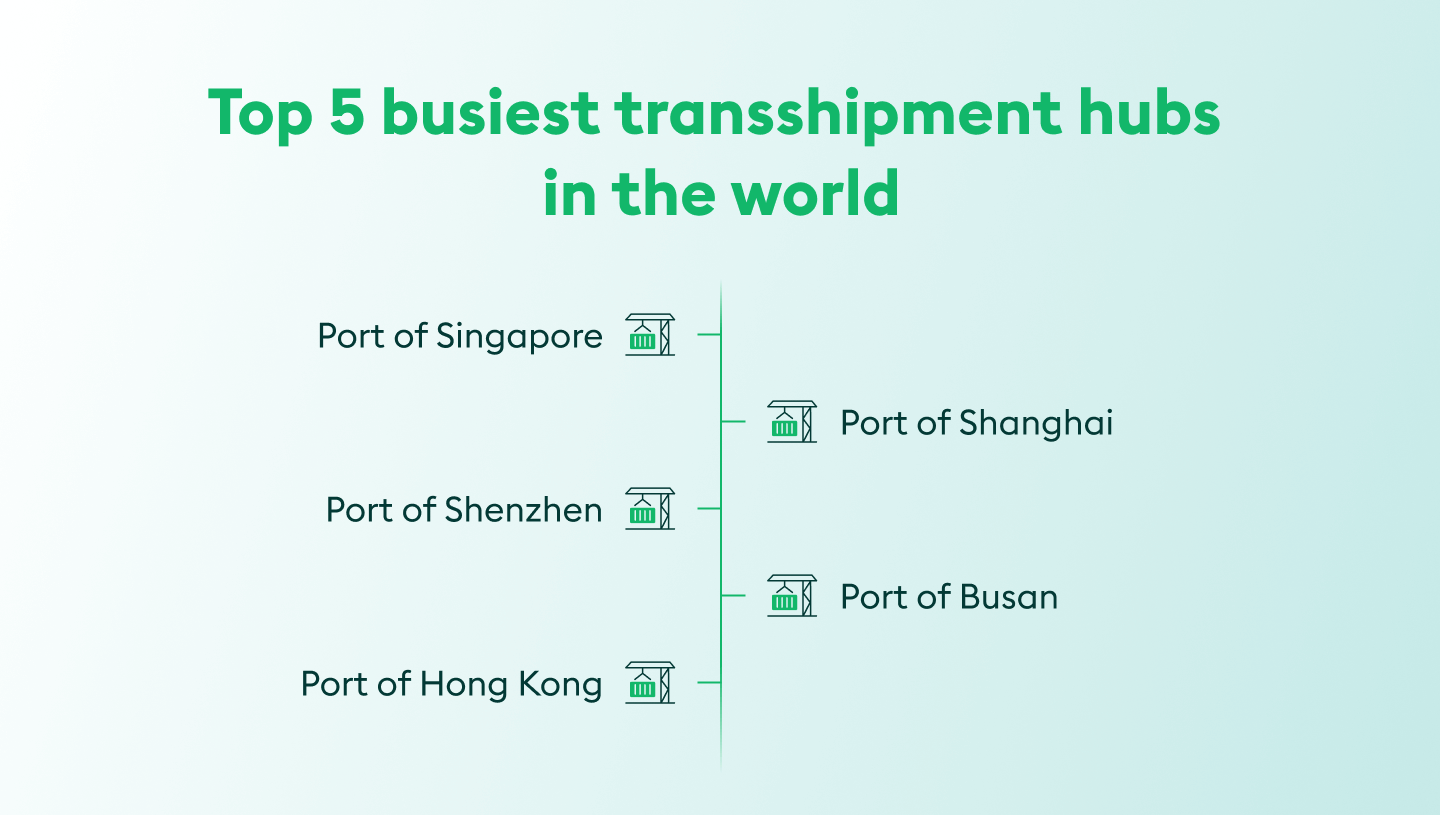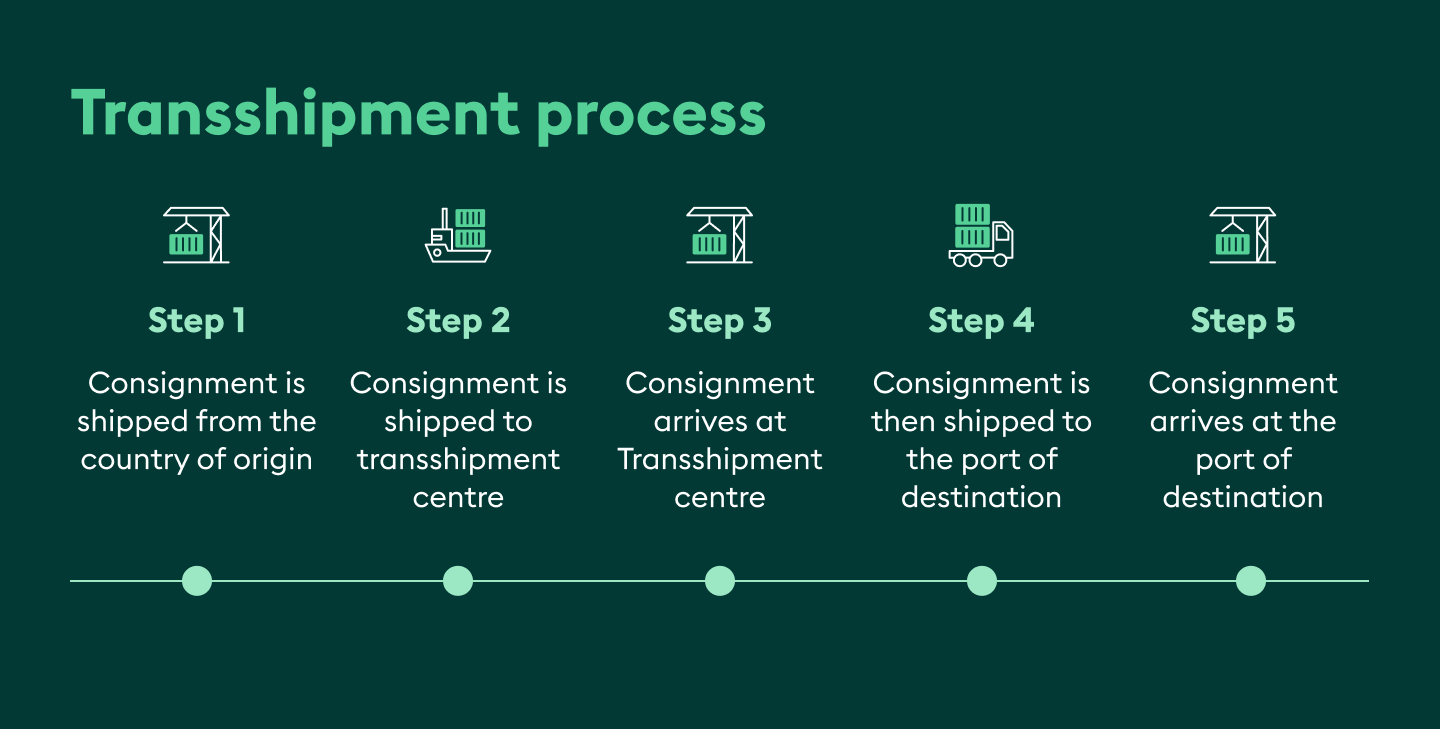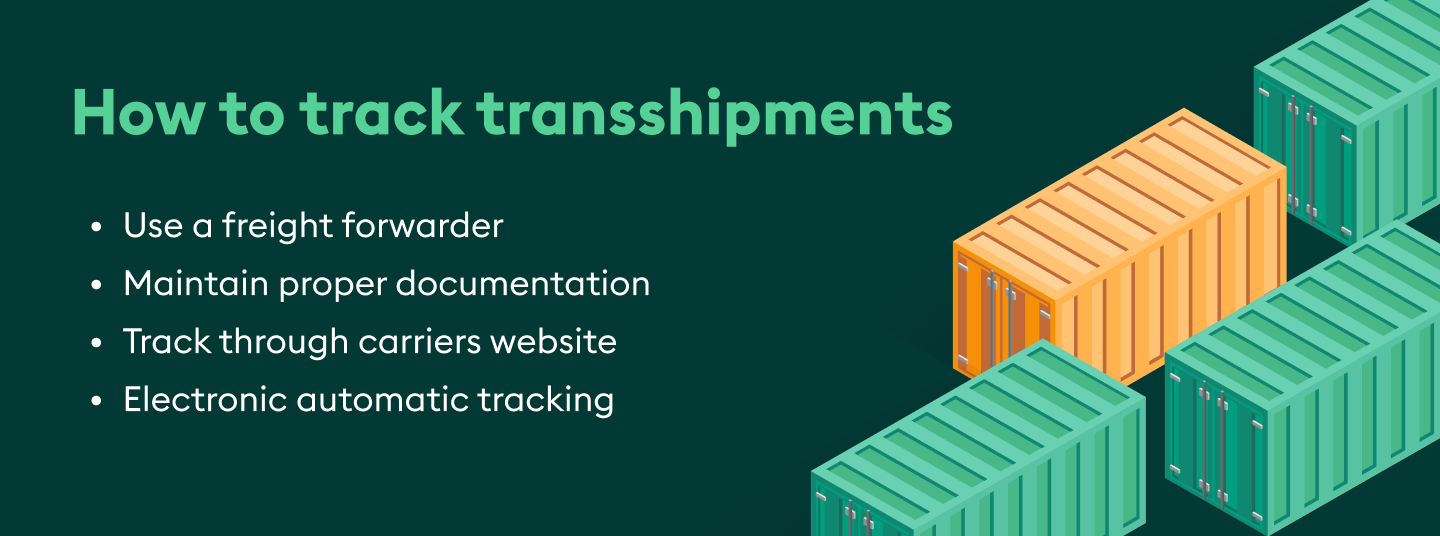Transshipment usually occurs when there is no direct trade route between the export and the import location. Read this blog to find out all about transshipment, major hubs, and how you can lease containers easily.
In the complex network of international trade, transshipment is crucial for the efficient movement of cargo. Whether you’re an experienced logistics expert or a business owner aiming to broaden your market, grasping the concept of transshipment is vital.
This often unnoticed process can greatly influence delivery schedules, expenses, and the overall effectiveness of your supply chain. Read this blog to learn more about transshipment, its reasons, significance, processes and more.
Apart from using transshipment, you can also lease containers at best rates to reduce the shipping cost. At our online container marketplace, you can lease containers for one-way moves at the most competitive rates. We’ve got 100,000+ containers available in 2,500+ locations around the world.
Start your leasing journey today! All you’ve to do is fill in your container requirements in the public search below, browse through the offers from vetted suppliers, and choose the best leasing deals.
25 x 40HC
Container Supplier
Container Company Blurred Name
5
Pick-up charge
User pays
$120
19 Freedays
$44.20 Per diem
What is Transshipment?
Transshipment is a complex supply chain process involving the transportation of cargo containers from one vessel to another while in transit to its final port of discharge.
During transshipment, the containers are unloaded at an intermediary site, reloaded onto a different vessel, and transported to the final destination. This intermediate location or the point of transfer is known as the transshipment hub.
Transshipment process
The transshipment process involves several key steps in the shipment journey.
Initially, the cargo is dispatched from its country of origin. Subsequently, it’s forwarded to a transshipment centre, acting as an intermediate hub. Upon reaching the transshipment centre, the cargo is then directed to its ultimate destination port. Once the cargo reaches the designated port of arrival, it marks the completion of the transshipment process.
Take a look at the image below to get a better understanding of this process.
Transshipment example
An excellent example of this would be the transportation from Durban in South Africa to Manila in the Philippines because there is no direct route between the two ports. Containers bound for Manila are transported on one vessel from South Africa to Singapore and then reloaded onto a second vessel from Singapore to Manila.
In this case, Singapore would be the transshipment hub – a port that has connections to the origin and destination ports. We’ll discuss more of the major transshipment ports later in the blog. But first, let’s understand why transshipments happen.
What are the reasons for transshipments?
Transshipment is a very common process in the shipping industry. Here are a few reasons why it happens.
No direct connection between ports
One of the main reasons for transshipment is when there is no (or only an expensive) direct air, land, or sea link between the port of origin and the port of destination.
Challenges with large vessels
Another reason why freight forwarders choose this process is when the port of destination is not available because of low tide or if the port is not able to accommodate mega vessels. In such a case, the containers are transferred to a smaller vessel to arrive at the destination.
Cost savings
Irrespective of the ports, direct shipping is usually costly. The transshipment option may take longer but ensures minimum transportation costs for freight forwarders.
Intermodal transportation
Intermodal transportation is a combination of two or more modes of transportation in order to move cargo from one place to another — such instances also call for a transshipment. For example, you may have to transport a shipment by rail from point A to B and via sea from point B to C.
Political or legal restrictions
It may also be necessary to avoid legal or political restrictions on certain types of shipments. Hence, it’s used to bypass trade embargoes or other regulations that restrict direct shipments.
Now that you know the reasons for transshipment, let’s take a look at some of the busiest transshipment hubs.
Top 5 busiest transshipment ports in the world
Here’s a list of some of the major ports for transshipment in the world.
Port of Singapore
The Port of Singapore offers connections to over 600 other ports in 123 countries across the world. It has around 130,000 vessels calling at the port annually. It’s also the world’s busiest transshipment hub – transshipping around 20% of the world’s shipping containers.
Port of Shanghai
The Port of Shanghai is the busiest port in the world and one of the busiest transshipment hubs. The port recorded a 3.6% YoY increase in container volumes from January to August of this year totalling 32.14 million TEU.
The port is linked with the Yangtze River, reaching into multiple provinces of China. Thanks to the extensive access to Chinese seas and the rest of the world, the port has become an important transshipment hub. It’s, undoubtedly, one of the most important Chinese gateways for foreign trade.
Port of Shenzhen
The Port of Shenzhen is a collective term used to refer to a series of ports located on the coastline of Shenzhen the region in China, including the ports of Yantian, Chiwan, Dachan Bay, and Shekou.
Thanks to technological developments in the area, many tech firms, including Huawei, Tencent, and SenseTime, have established their headquarters in Shenzhen. Shenzhen is now a leading global technology hub often referred to as China’s Silicon Valley. As a result, the Port of Shenzhen remains busy and handles large amounts of cargo.
Port of Busan
Located in South Korea, the Port of Busan is also a major transshipment hub. Busan’s feeder vessel network has enabled it to connect to ports in Russia, China and Japan, and its transshipment services enable it to attract larger volumes of cargo.
Port of Hong Kong
In the 1990s, the Port of Hong Kong was the strongest and most effective in southern China. But given the rise of China and other surrounding ports in recent years, Hong Kong has since slipped. However, it remains an important transshipment hub and has extensive facilities for repairing, maintaining and dry-docking all types of ships.

Difference between direct shipment and transshipment
Take a look at the table below to understand the difference between direct shipment and transshipment.
| Direct shipment | Transshipment | |
| Meaning | The container is shipped directly from one port to another through one vessel | The container goes through a transfer of vessels at a transshipment port and is thus, shipped through two vessels |
| The number of ports | Two: The port of origin and the port of destination | Three: The port of origin, port of transshipment and port of destination |
| Cost | Relatively more expensive | Relatively cheaper |
| Time | Comparatively shorter duration | Comparatively longer duration and may be delayed |
Difference between transshipment and transloading
Being part of the shipping industry, you might also have heard the term transloading. Although it sounds similar to transshipment, there is a difference between the two.
Transshipment and transloading both refer to the transfer of goods from one form of transportation to another. However, transloading refers to the transfer of goods between different types of containers, while transshipment refers to the transfer of cargo from one ocean vessel to another while remaining in the same container.
How to track transshipments?
Let’s suppose your company is shipping goods through all the ports that we discussed above. A major concern for you now would be to keep track of all these shipments and make sure they reach their destination on time.
There are many ways you can keep track of your shipments. Let’s discuss them in more detail.
Use a freight forwarder
An efficient freight forwarder will handle everything related to your shipment. They’ll also keep track of all your shipments and inform you of any delays that might occur in the process.
Freight forwarders are uniquely positioned as middlemen between carriers and shippers. They share a good working relationship with both parties. But to streamline shipments in this dynamic industry, they’re always looking to procure containers.
Our platform provides a safe space for shipping companies to connect with each other to buy, sell and lease containers in 2,500+ cities. All companies are vetted and have peer reviews and ratings, allowing you to choose the right partner for your business.
Maintain proper documentation
It’s important to maintain proper documentation throughout the trans shipment process to enable effective tracking. Some of the important documents you need to keep handy are the Bill of Lading, customs documents, and various paperwork relevant to the shipment. By keeping proper documentation, it becomes easier to monitor the progress, location, and status of your shipments.
Track through carrier’s website
Another way to track your containers is by going to the carrier’s website and entering your Bill of Lading (BOL) number. However, this way you’ll have to manually track all your containers and you can’t store your container information on the website. This process then becomes extremely time-consuming and repetitive when you send multiple shipments.
Electronic automatic tracking
Electronic or e-tracking systems can be used to monitor the movement of containers and provide real-time updates on their location and status. It’s one of the most effective options for tracking as you get automatic updates on your shipments.
And one of the best tools to track your containers is through the xChange tracking tool. Read on to find out more.
Lease and track your containers in real-time with our leasing marketplace
When you lease containers from our container leasing marketplace, you not only get the most competitive leasing rates for your one-way moves but also get automated real-time updates on container movement. This means you can keep track of all containers movements in one dashboard.
Apart from this, our leasing marketplace also stores all important shipping documentsWhat are shipping documents? In shipping, shipping documents are documents that provide information about the goods being shipped. They may include information such as the origin and destination of th... More under one tool for easy access. This includes pick-up and drop-off references.
Just click on the banner below and schedule a free demo with our experts who’ll be happy to answer all your questions about leasing containers at competitive rates, and how to track them from the convenience of one dashboard. Book your free call now!
Transshipment: Common FAQs
What is transshipment?
Trans-shipment means the unloading of goods from one vessel and loading them into another to complete a journey to the final destination.
What are the reasons for transshipment?
Some common reasons for trans-shipment are the lack of a direct link between locations, trade restrictions between countries, and reduced costs.
Which are the busiest transshipment hubs in the world?
Some of the busiest transshipment hubs are the Port of Shanghai, Port of Singapore, and Port of Shenzhen. These ports handle large amounts of transshipments and are also the busiest ports in the world.





